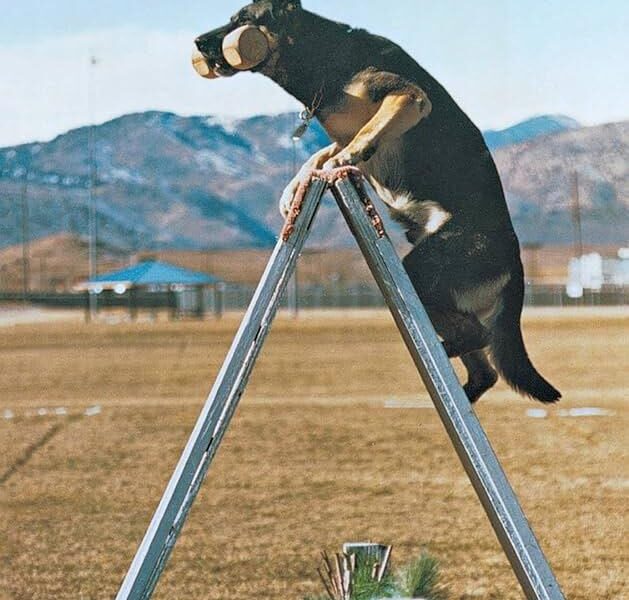Unlocking the Art of Schutzhund Dog Training: A Journey of Trust and Tenacity
In a world where the bond between humans and their canine companions is celebrated, Schutzhund dog training stands out as a unique discipline that transcends simple obedience. Originally developed in Germany for examining the qualities of working dogs—particularly German Shepherds—the sport melds the intricacies of tracking, obedience, and protection into a single, harmonious pursuit. But Schutzhund is more than just a test of skill; it is a profound journey of trust and teamwork between dog and handler. As we delve into the key elements of Schutzhund training, we will explore its history, fundamental techniques, and the invaluable life lessons it imparts, not only for the dogs but for their human counterparts as well. Whether you are a seasoned trainer or a curious enthusiast, this guide will illuminate the enriching experience that awaits in the world of Schutzhund dog training.
Table of Contents
- Understanding the Foundation of Schutzhund Training Techniques
- Building a Strong Bond Through Obedience and Socialization
- The Importance of Environmental Stability in Schutzhund Preparation
- Health and Safety Considerations for Training Success
- Q&A
- In Summary
Understanding the Foundation of Schutzhund Training Techniques
At the core of effective Schutzhund training are a variety of foundational techniques that emphasize the bond between dog and handler. These techniques prioritize trust, communication, and patience, ensuring that training sessions are both productive and enjoyable. Instilling a solid understanding of these principles early on is essential, as they shape the dog’s behavior and responsiveness in future tasks. Handlers are encouraged to utilize positive reinforcement methods, such as treats and praise, which not only reward desirable behavior but also enhance motivation and confidence in the dog.
Understanding the key components of Schutzhund training can enhance your approach significantly. Here are some vital aspects:
- Engagement: Maintain your dog’s interest through interactive sessions.
- Focus: Teach your dog to concentrate on tasks despite distractions.
- Discipline: Establish a routine that fosters reliability in behavior.
- Socialization: Expose your dog to different environments and people to develop adaptability.
Incorporating these principles creates a holistic training experience. The gradual progression of exercises—from basic obedience to more complex tasks—requires consistent practice and oversight. A table comparing different training phases can illustrate the step-by-step development in Schutzhund:
| Training Phase | Focus Area | Typical Exercise |
|---|---|---|
| Foundation | Basic commands | Sit, Stay, Come |
| Intermediate | Attention Span | Engagement games |
| Advanced | Tracking & Protection | Controlled bite work |
Building a Strong Bond Through Obedience and Socialization
Engaging in obedience training lays the groundwork for a trusting relationship between you and your dog. This practice fosters communication and understanding, essential elements for a harmonious partnership. Through consistent commands and positive reinforcement, dogs learn what is expected of them, leading to a sense of security and purpose. As your dog navigates through various commands, it builds a mental connection to you as its leader, creating a strong bond that extends beyond just simple tasks.
Socialization, in tandem with obedience training, is crucial for a well-rounded canine companion. Exposing your dog to different environments, people, and experiences enhances its adaptability and confidence. Here are some key benefits of socialization:
- Reduced Fear: Well-socialized dogs are less likely to react fearfully to unfamiliar situations.
- Improved Behavior: Regular interactions help diminish aggressive tendencies and promote friendly behavior.
- Enhanced Learning: Dogs that socialize well are more receptive to training, absorbing commands quickly.
Moreover, consistency in obedience and socialization creates a structured routine that dogs thrive upon. This stability not only nurtures their instincts but also infuses a sense of routine, crucial for their well-being. The table below outlines effective methods for achieving this balance:
| Method | Description | Benefit |
|---|---|---|
| Daily Training Sessions | Short, focused sessions to teach commands. | Builds concentration and bond strength. |
| Group Classes | Training alongside other dogs and handlers. | Enhances social skills and adaptability. |
| Field Trips | Introduce your dog to different environments. | Boosts confidence and reduces anxiety. |
The Importance of Environmental Stability in Schutzhund Preparation
When preparing a dog for Schutzhund training, fostering a stable environmental routine can significantly enhance the learning process. Dogs thrive in environments that are predictable and secure, making it essential to establish a consistent training routine that includes:
- Daily Training Sessions: Regular short sessions keep the dog engaged and reduce anxiety.
- Consistent Cues: Using the same words and commands helps the dog understand expectations.
- Routine Socialization: Regular exposure to different settings and people aids in building the dog’s confidence.
Moreover, environmental stability not only benefits the dog’s mental well-being but also ensures that focus and discipline are maintained throughout the training period. By creating a balanced environment, owners can foster effectiveness and engagement in training. Consider maintaining a training log to monitor:
| Aspect | Impact |
|---|---|
| Consistency | Facilitates quick learning and retention. |
| Routine | Reduces stress and improves focus. |
Health and Safety Considerations for Training Success
When engaging in schutzhund dog training, the well-being of both the trainers and the dogs is paramount. To ensure a productive and safe training environment, it’s crucial to implement certain measures. First, always conduct training in a secure area free from distractions and hazards. Basic safety gear, like durable leashes and collars, should never be overlooked. Additionally, consider the following best practices to enhance safety during training sessions:
- Regularly check and maintain all training equipment.
- Ensure dogs are physically fit and healthy prior to training.
- Keep first aid kits on hand, complete with supplies for both dogs and humans.
- Be aware of environmental factors such as temperature and terrain that could impact training.
Another essential consideration is ensuring that trainers and handlers understand dog behavior and body language. Recognizing signs of stress or discomfort in dogs can prevent potential injuries and improve training outcomes. Training should not only focus on obedience but also on creating a positive experience for the dog. Incorporating positive reinforcement techniques fosters a safer atmosphere for both trainers and their canine companions. Here’s a simple reference table for understanding critical dog behaviors:
| Behavior | Indication |
|---|---|
| Relaxed posture | Comfortable and receptive |
| Raised hackles | Alert or agitated |
| Tucked tail | Fearful or submissive |
| Excessive yawning | Stressed or anxious |
Q&A
Q&A: Unpacking the World of Schutzhund Dog Training
Q: What is Schutzhund training, and what does it entail?
A: Schutzhund, which translates to “protection dog” in German, is a sport that originated in Germany and focuses on developing a dog’s ability to perform three main disciplines: tracking, obedience, and protection. It’s not only about physical prowess but also tests the dog’s temperament, focus, and willingness to work with their handler.
Q: What breeds are best suited for Schutzhund training?
A: While Schutzhund can be practiced with various breeds, the most commonly associated breeds are German Shepherds, Rottweilers, and Doberman Pinschers. These dogs generally possess the drive, intelligence, and physical ability to excel in the sport. However, it’s important to note that any breed that demonstrates the right temperament can participate.
Q: Is Schutzhund training only for competition?
A: Not at all! Though Schutzhund is widely recognized as a competitive sport, many owners pursue it simply for the bond it fosters between dog and handler. It offers a structured way for owners to engage their dogs mentally and physically, promoting a well-rounded development that translates to better behavior at home.
Q: How does the training process begin?
A: Schutzhund training typically starts with foundational obedience training. Owners establish a strong command basis, ensuring the dog can follow basic commands consistently before introducing more complex behaviors. As the dog progresses, tracking and protection exercises are gradually introduced under the guidance of a trained instructor.
Q: What are the benefits of Schutzhund training for dogs and their handlers?
A: Schutzhund training provides numerous benefits, including improved obedience, socialization, and mental stimulation for the dog. For handlers, it cultivates patience, consistency, and leadership skills. Additionally, the teamwork involved can strengthen the bond between dog and owner, leading to a more harmonious relationship.
Q: Are there any specific challenges handlers might face during training?
A: Yes, handlers might encounter challenges such as maintaining motivation in their dogs, especially during the long training process. Consistency is key, and some dogs may require more time to learn certain skills. Additionally, handlers must be prepared to face their own learning curves, as they often need to master the techniques to effectively train and communicate with their dogs.
Q: Is Schutzhund training safe for all dogs?
A: Generally, yes, but safety is paramount. It is crucial to assess each dog’s temperament and physical condition before beginning Schutzhund training. Dogs that exhibit aggressive tendencies or lack proper socialization may not be suitable for this type of training. It’s advisable to work with a professional trainer who can evaluate the dog’s readiness and ensure a safe training environment.
Q: Can Schutzhund training improve a dog’s behavior at home?
A: Absolutely! The skills learned through Schutzhund training—like impulse control, attentiveness, and reliability—often translate into better behavior in everyday situations. Dogs become more disciplined and responsive to commands, making them easier to manage in a home setting.
Q: Where can I find Schutzhund training classes or clubs?
A: Many kennel clubs and dog training organizations offer Schutzhund classes. Online resources can also help you locate local clubs that specialize in this training. Additionally, national organizations often have directories that can connect you with certified trainers and clubs in your area.
Q: What equipment is typically used in Schutzhund training?
A: Gear commonly used in Schutzhund includes specific leashes, collars, and harnesses designed for control and safety. Handlers may also utilize various training aids like clickers, bite sleeves, and dummies depending on the exercise. Proper equipment is crucial to ensure effective training and the well-being of the dog.
By exploring these questions, we hope to inspire interest in Schutzhund training and reveal the many facets of this engaging and rewarding activity for dogs and their owners alike!
In Summary
Schutzhund dog training is much more than a rigorous discipline; it is a multifaceted journey of companionship, trust, and mutual growth. This unique training approach not only highlights a dog’s innate abilities but also strengthens the bond between handler and canine. As enthusiasts and professionals continue to explore its depths, we uncover how Schutzhund can foster not only extraordinary working dogs but also dedicated partners that enrich our lives. For those considering this path, remember that the essence of Schutzhund lies as much in the journey as in the destination. Embrace the challenges, celebrate the victories, and watch as your canine companion flourishes in both skill and spirit. The world of Schutzhund awaits—ready to unveil the remarkable potential hidden within your dog.



